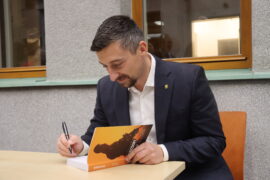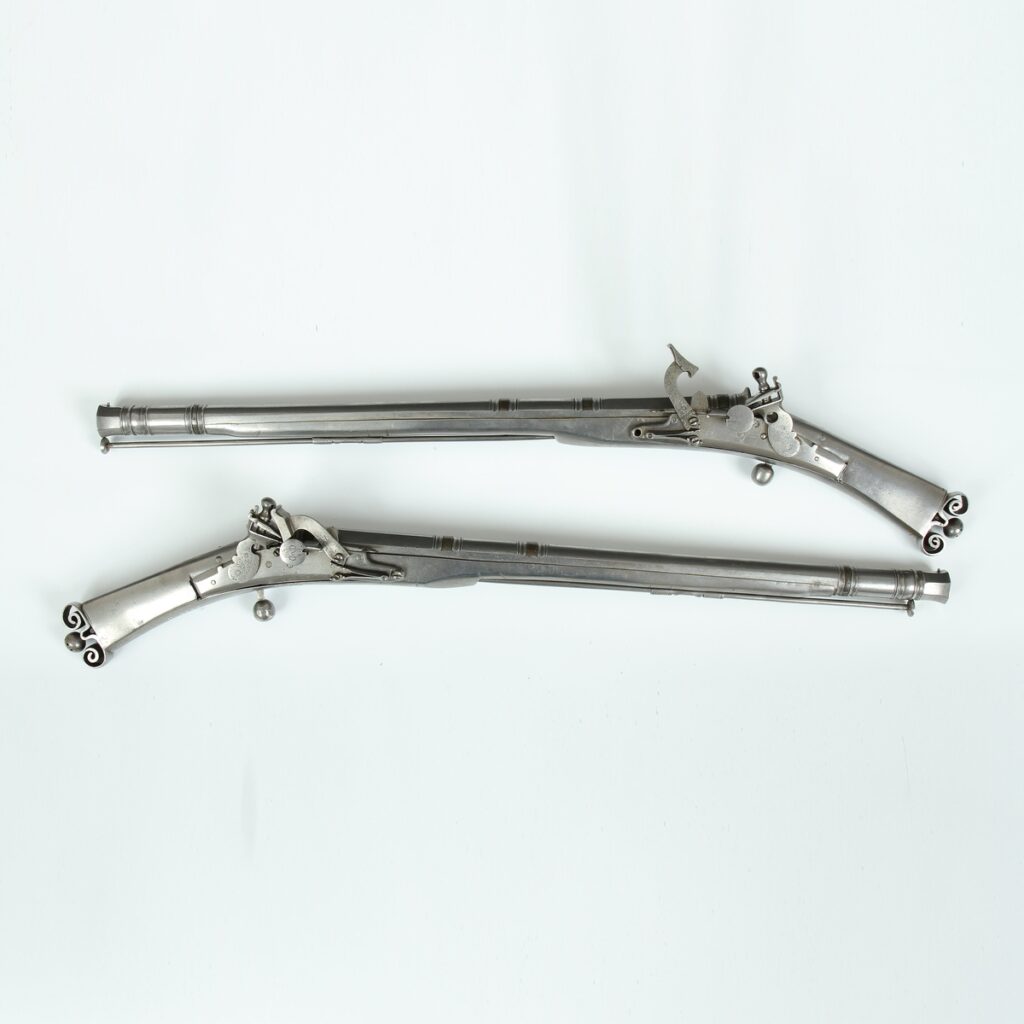
14 Pair of Scottish Flintlock Pistols, Scotland, 1662
Fotogalerie
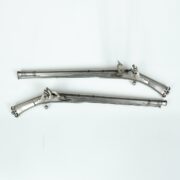


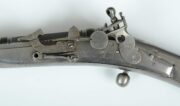
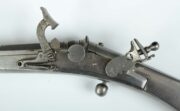
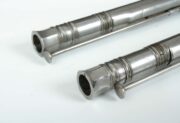
Pistols made in Scotland from the early 17th century to the 19th century bear a number of features that distinguish them from pistols made in other European countries. They are usually fitted with a Scottish variant of the flintlock with an internal spring, a separate frizzen and pan cover, and a circular target on the side of the pan. The pistols are all metal, always fitted with a belt hook, have no trigger guard, and the handle is finished with one of several typical variations – here with “ram’s horns”, other times with a ball, lemon, heart or “fishtail”. Paired pistols always have locks on opposite sides.
Most of these characteristics are given by the way the pistols are used. The Scottish Highlanders, famed warriors, used both weapons simultaneously, one in the right hand and one in the left; for this reason, the pistols have locks on opposite sides. They fought as infantrymen and their pistols had to have a belt hook retracted behind the belt (the rider kept the pistols in a saddle holster). When fired, the pistols served as blowing weapons, and therefore, an iron grip was preferred to a wooden one.
The pistols that we can see here do not bear any gunsmith’s mark; the target at the pan is dated 1662. A very similar pistol in the Burrell Collection in Glasgow is dated 1649 on the target and is believed to come from Aberdeen. Another similar example is dated 1682, suggesting that identical or similar guns were produced without any changes over a long period of time.
Length 600 mm, 16 mm calibre, weight 1,178 g.
Aktuálně

Výzkum u českých krajanů v Chorvatsku
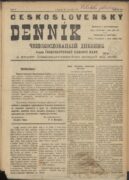
Československý deník sehrál v životě legionářů v Rusku velmi důležitou roli. Poprvé vyšel v prosinci 1917

Děkujeme za podporu pro válečné veterány. Sbírka DiGiMÁK vynesla 450 tisíc korun
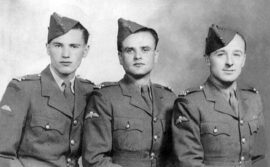
Tak trochu zamrzlé spojení
